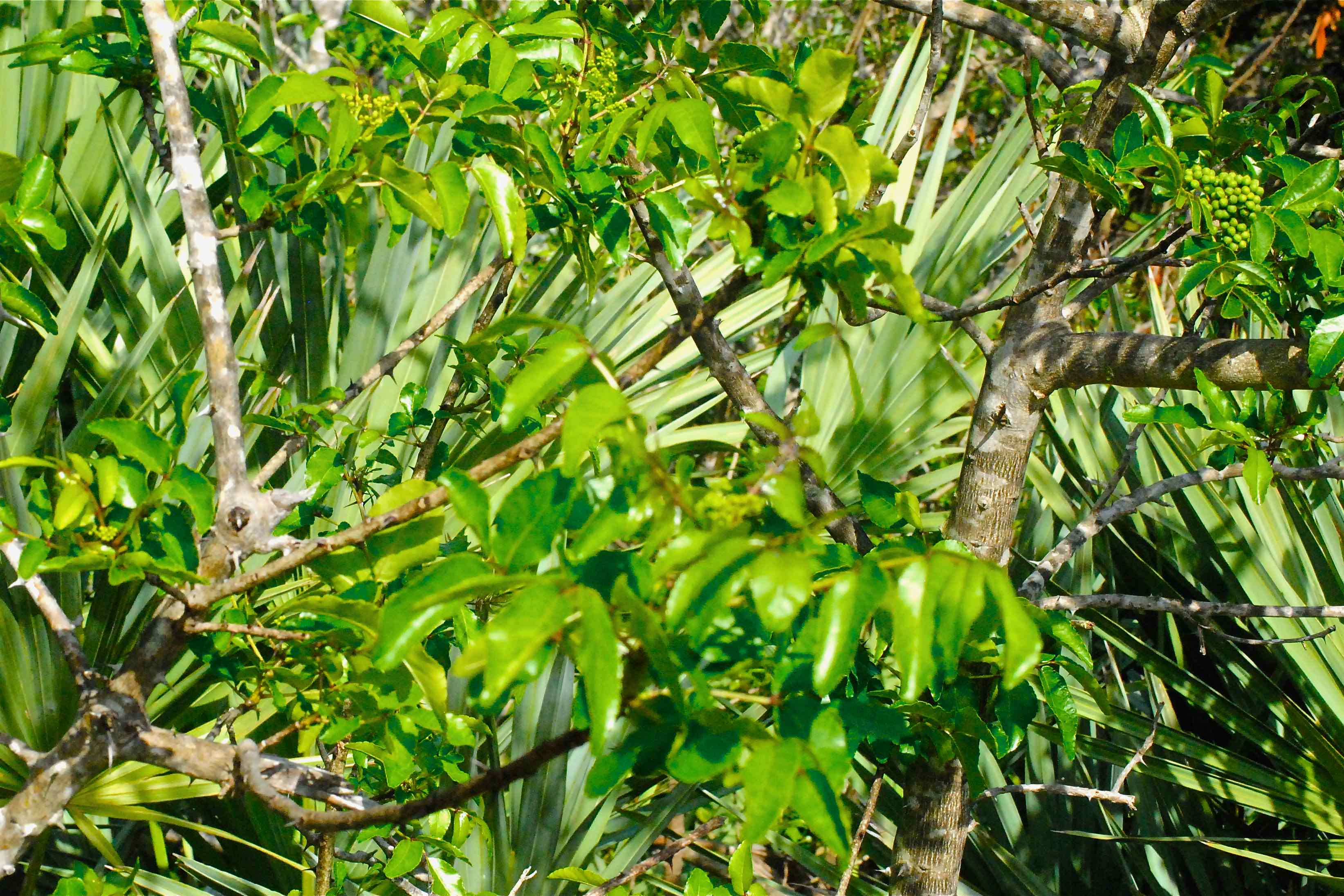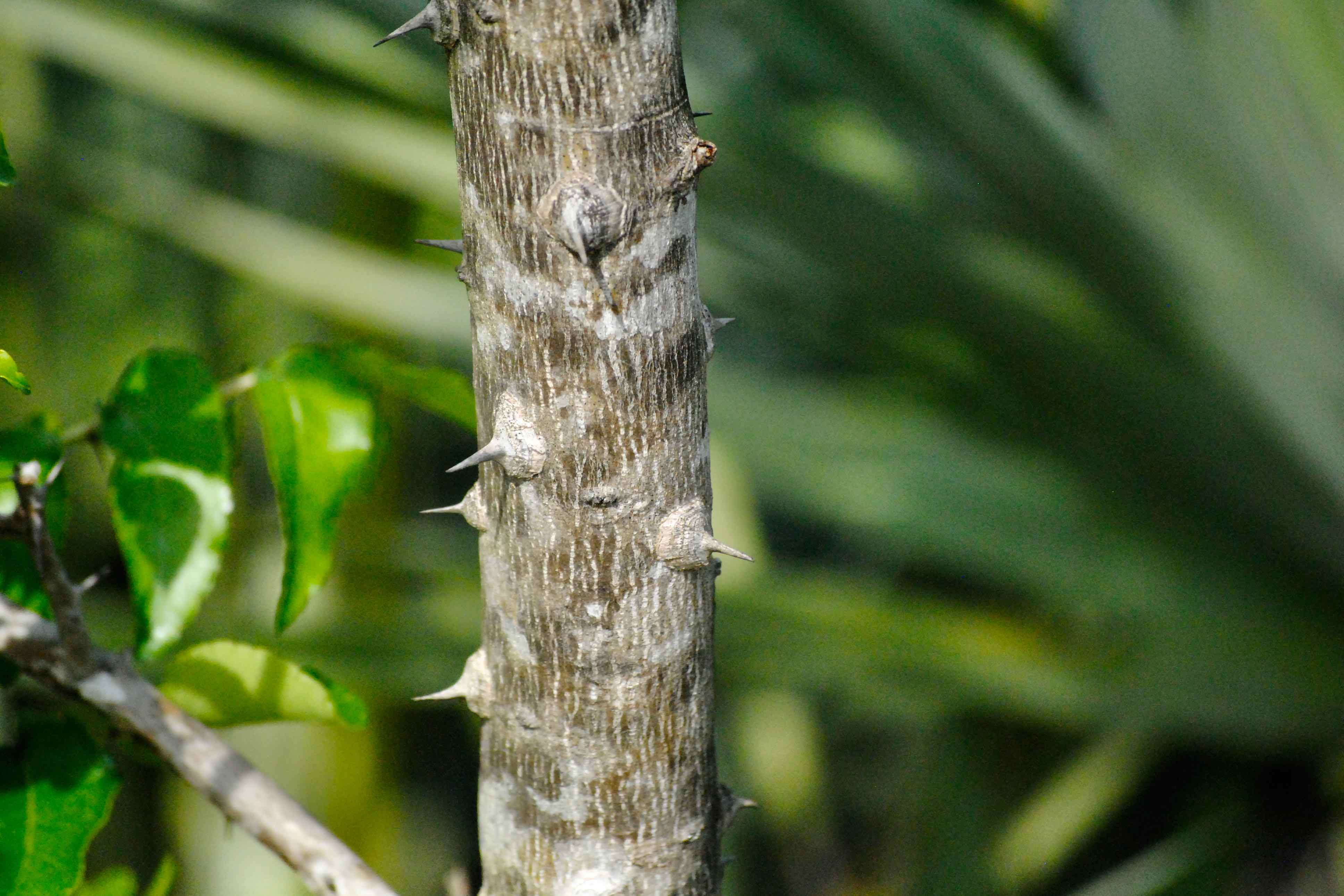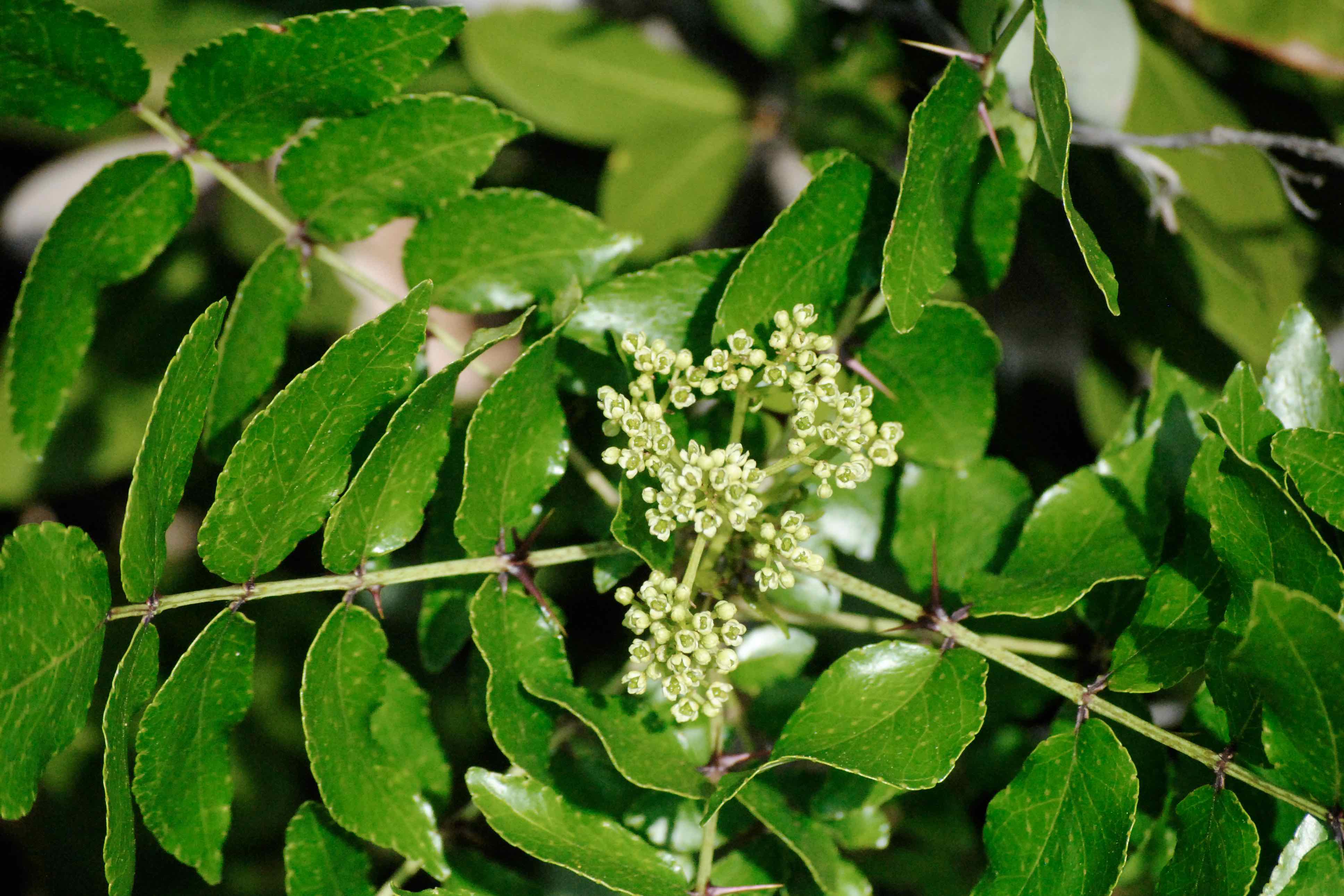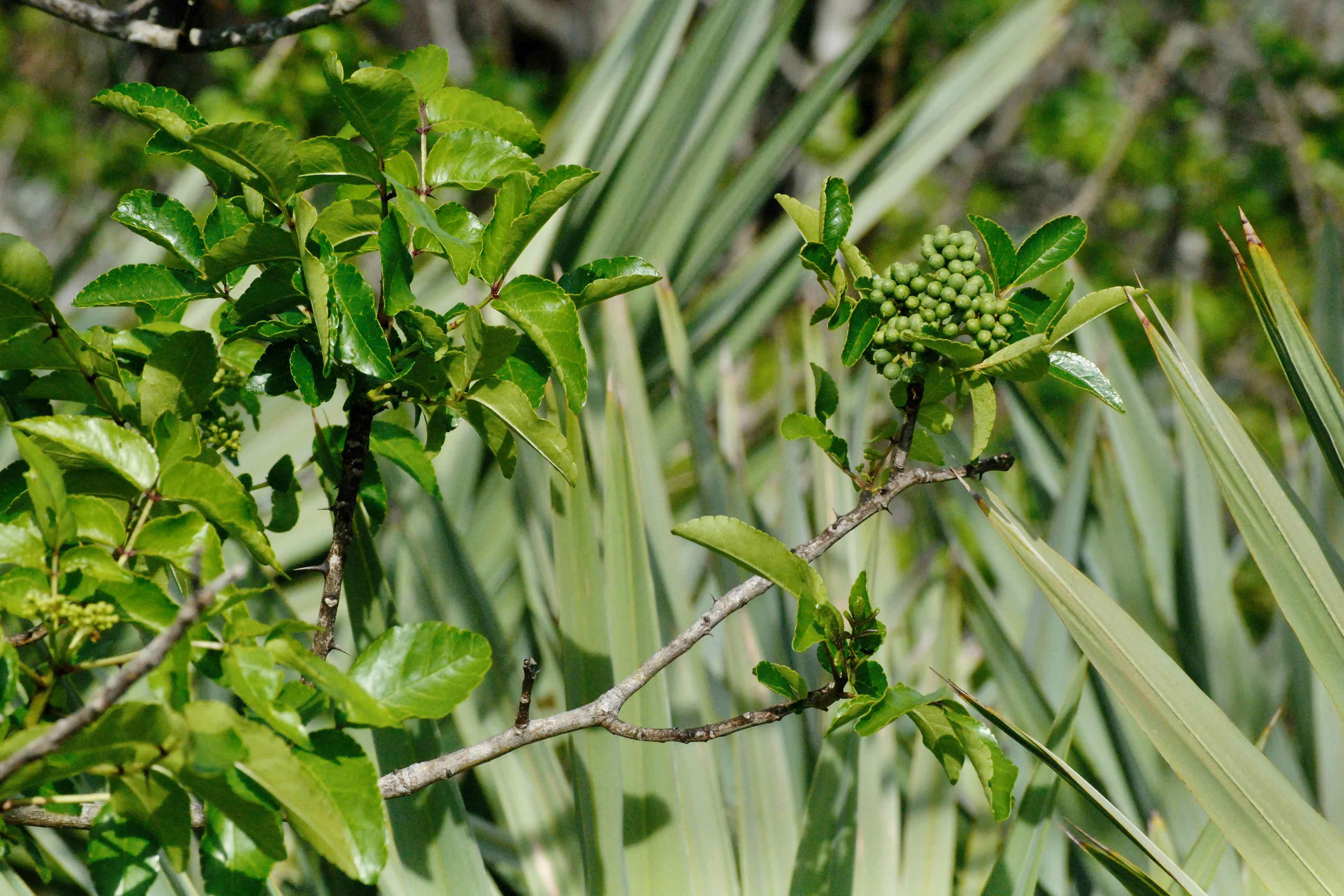
Hercules' club, photographed at Juno Dunes Natural Area (oceanfront tract), Juno Beach, Palm Beach County, in February 2014.
Hercules' club, Zanthoxylum clava-herculis, is as formidable as its name implies. The trunk and branches are covered with large, sharp thorns that look as if they'll do serious damage to anything trying to get hold of it. Hercules' club is also a major component of the herbal medicine cabinet. One of its many other common names, the toothache tree, hints at how it's used.
The name of the tree comes from the Greek mythological hero's weapon of choice, a spiked club. The tree itself is found throughout the Southeast, from Virginia to Texas. It's native to Florida and a little more than half of the state's counties in both the Panhandle and Peninsula. The Institute for Regional Conservation considers it rare in South Florida, but it is not listed as endangered or threatened anywhere in its range. Hercules' club also is native to parts of the Caribbean, Mexico, Central America and South America, and is naturalized elsewhere.
It grows as a shrub or small tree, typically hitting 10 to 20 feet here in South Florida, but it can be much taller. The bark is grayish white, covered with large thorns and develops wart-like bumps along its length as it gets older. Younger growth has some red to it, and has thorns throughout. In spring, Hercules' club produces large clusters of small, yellow-green flowers that, in turn, produce clusters of small green fruit that turns dark blue or black when ripe. It's found in coastal areas, in dunes and on bluffs in full sun or partial shade.
The bark is aromatic and bitter. Biting into it produces a numbing effect, so it's used as a folk remedy for toothache and other injuries. We've also read that the sensation it causes is as unpleasant as the aching tooth. The Houma of Louisiana used the root as well as the bark to make a poultice.
They also used it with whiskey to make a salve for treating swollen limbs. But that's only a small portion of what Hercules' club has been used for. The bark contains a bitter oil called xanthoxylin. It's been used as a stimulant, to treat fevers, poor circulation and rheumatism. Hercules' club has been used to make treatments for venereal disease, respiratory ailments, ulcers and skin problems. It contains chelerythrine, which has shown promise as a treatment for drug-resistant staph. The seeds have been used as a pepper substitute.
Hercules' club is used in landscaping, though mostly in natural landscapes and restorations. It is a host plant for caterpillars of the giant swallowtail butterfly.
Hercules' club is a member of Rutaceae, the citrus family. It is related to native citrus trees, like wild lime. Other names: prickly ash, sea ash, pepper bark, Hercules club, southern Hercules club and southern prickly ash.
Click on photo for larger image
Links for Hercules Club



